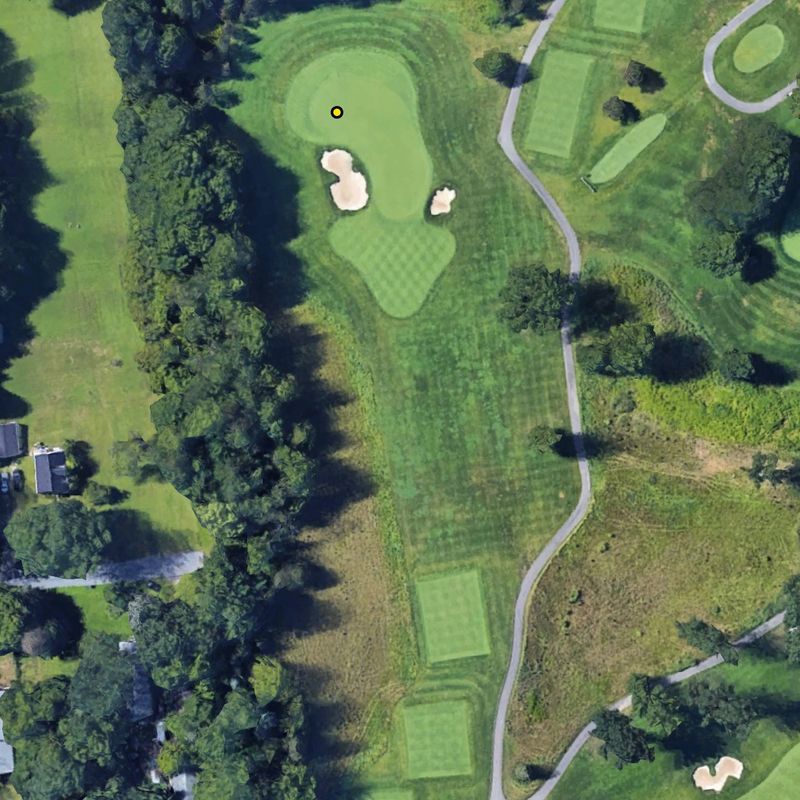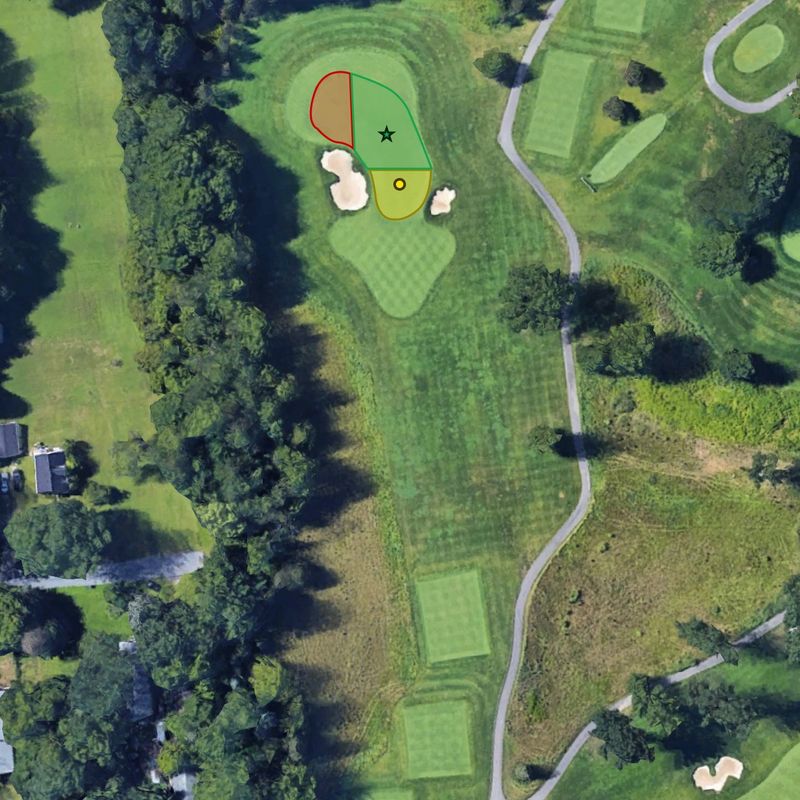When you hit an approach shot into the green, how often do you aim away from the pin?
Ever?
If you're like most amateur golfers, you probably haven't even thought about this.
The pin is there for a good reason right? Isn't it the intended target to aim at?
Why you should NOT aim at the pin
"But Zach, the pros aim at the pin, why can't I?"
Actually, the pros rarely aim at the pin.
Oftentimes, the guys on tour are hitting 200+ yard approach shots into the greens with 7, 6, 5, 4, and even 3 irons/hybrids.
From that distance, unless the pin has zero trouble surrounding it, chances are, the pros will not be aiming at it.
This obviously changes once you put a wedge in their hands. From 100 yards, the pros almost always aim at the pin (and often stick it close).
So if I'm sitting here telling you to NOT aim at the pin on all your approach shots, what should you do instead?
Let's talk about the Stoplight Strategy.
What is the "Stoplight Strategy"?
The basic idea of the stoplight strategy is this:
- Every green has 3 quadrants
- The "Go Zone" (green)
- The "Danger Zone" (yellow)
- The "No Zone" (red)
- The middle of the green is the middle of the "Go Zone" and should almost always be your aiming point
The best way to describe this is through examples.
Example #1
Take a look at the par 3 below. The yellow dot represents the pin placement, and let's imagine this hole requires you to hit a long iron or hybrid into the green.

Before reading any further, ask yourself—if the pin is in the back-left of this green, where do you think the safest place to aim is? How about the most risky?
Considerations to make
A picture isn't perfect. There are several things we should be considering before mapping out our strategy for the shot:
- Which way does the green slope?
- How deep are those bunkers?
- How thick is the rough around the green?
- How soft are the greens?
In making these considerations, we're trying to figure out the WORST areas around the green to miss.
For this example, we'll assume a flat, moderate-speed green with moderate rough and bunkers around it.
So what's the strategy?
For this shot, here's my strategy:
- Pick a club that will clear the left bunker
- Long is okay here.
- Short is NOT because of the bunkers, which are the most penalizing features around this green
- Aim at the back right of the green.
- If I pull it, I'm still on the green (because I took enough club to clear the bunker)
- If I push it, I'll have a chip from the rough, but I will still have plenty of green for the ball to roll on
Here's my "Stoplight Strategy" for this hole where the green star is my aiming point and the yellow circle is the pin.

How'd you do?
Let's move on to the next example.
Example #2
For the second example, we're looking at the same exact hole, but a different pin placement.

Take a second and try to come up with the "Go Zone", "Danger Zone", and "No Zone" for this hole.
And remember, you're hitting a long-iron or hybrid into this green!
Considerations to make
Just like the first example, we want to consider things like how deep the rough and bunkers are, where the green slopes, etc.
But now that the pin is in the front, we have to ask a few more questions:
- If I miss left or right in the bunkers, is the green wide enough to stop a bunker shot?
- The last thing we want is to hit from one bunker to the next!
- If I miss long-left, do I have any chance of hitting my next shot near the pin?
So what's the strategy?
Based on these considerations, here's my strategy:
- Pick a club that will clear the right bunker
- This gives us a margin for error because if we miss to the right, we'll have a chip from the rough rather than the bunker
- Aim for the "true center" of the green, or even favor the right side a little bit
- If we come up a bit short, no problem, we're right next to the pin!
Here's my Stoplight Strategy for this pin location:

Does this strategy work for high handicappers?
Oftentimes when I talk about the stoplight strategy, I get the following response:
But Zach, I don't know how far my clubs go! I also have no idea where the ball is going, so what's the point of aiming?
Golf is a hard game.
It's easy for a pro to use this strategy, but what about the average golfer?
To that, here's my advice—play like the player you want to be.
If you're a 20 handicap who can't seem to hit the target if your life depended on it, I still recommend this stoplight strategy.
Why?
Because part of getting better at golf is learning how to:
- Strategize better
- Be consistent with your pre-shot routine
- Visualize shots you want to hit
This Stoplight strategy will force you to do these things.
You may struggle to hit your target for many months or years, but keep a good attitude about it over a long enough period of time and you WILL improve your game.
And with that, I'll see you next week!
Hit 'em straight!
